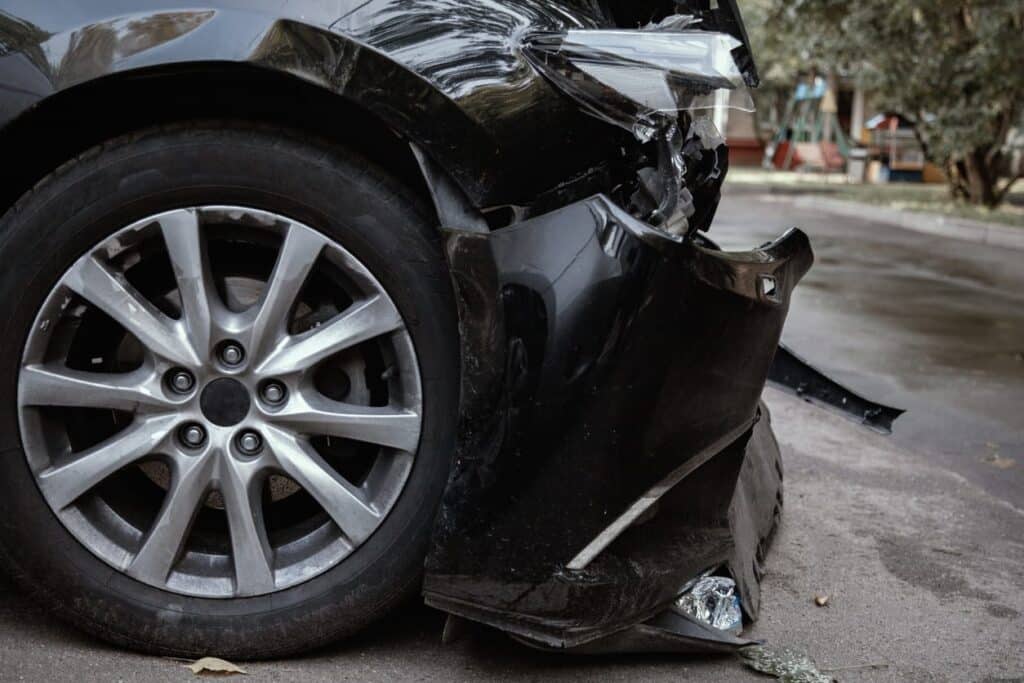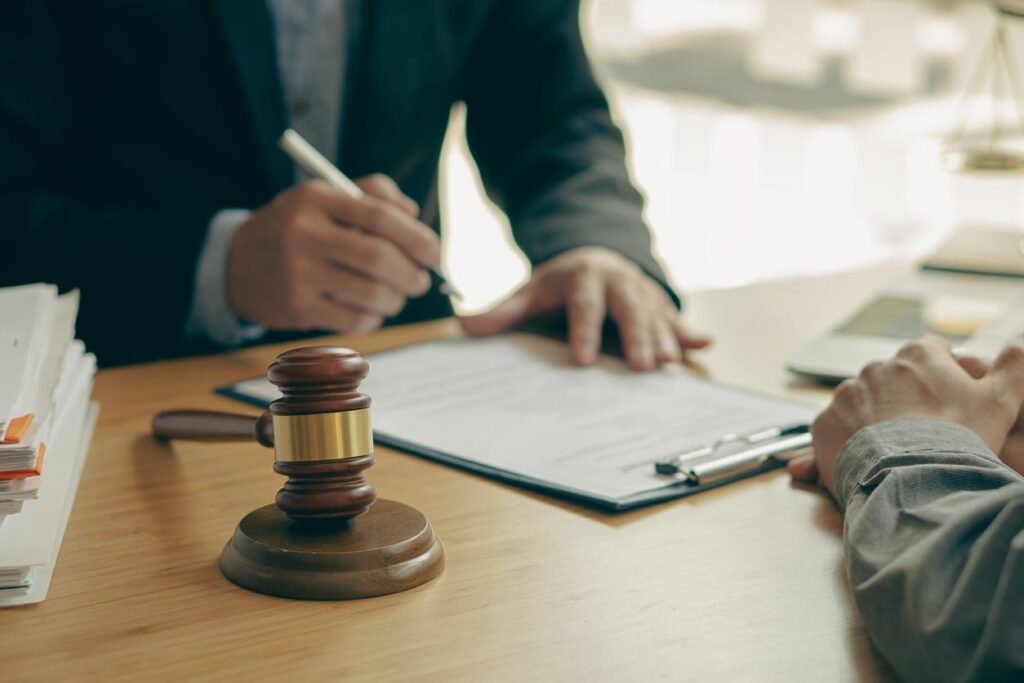Thousands of people in the United States deal with car accidents every day. In 2020, car wrecks injured over 2.28 million people and caused 38,824 deaths. The volume of motor vehicles on roadways and the number of drivers are two reasons the U.S. has more car accidents annually than any other country.
Although car accidents may be everyday occurrences, they’re anything but routine for the people involved. Although there are some basic steps you should take after an accident, it’s common for accident victims to be distraught or in shock. You may not realize the steps you must take may change if someone’s injured. Knowing what you should do after getting in a car accident in which someone is injured ensures everyone receives the medical care they need and helps you protect your legal rights.
What should I do after getting in a car accident in which someone is injured?
Following the appropriate steps after an accident ensures you comply with traffic laws while getting everyone the help they need.
1. Stay at the scene
Every state creates and enforces traffic laws drivers must follow. Florida law requires all drivers involved in a crash to stay at the accident site. This statute applies to accidents involving injuries and accidents involving property damage. Any driver leaving the scene could be charged with a second-degree misdemeanor and fined $500.
Although it’s essential to remain at the accident site until the police arrive, you may need to move your vehicle to allow traffic to pass safely. If possible, move vehicles to the side of the road. Suppose you’re in an unsafe location, such as stopped on active railroad tracks. In that case, you should move to the closest safe location and wait for the police to arrive.
2. Call 911 immediately
The sooner you call 911, the sooner law enforcement officers can respond to the scene. Since severe accidents may block roadways, you may need officers to direct traffic, particularly if someone is severely injured and unable to be moved until medical help arrives.
3. Check others for injuries
Whether your medical knowledge is limited or extensive, you’re legally obligated to assist anyone injured. This doesn’t mean you’ll need to perform surgery. You must take appropriate steps to ensure the person receives appropriate medical care. Calling for an ambulance and waiting until the paramedics arrive is an example of rendering aid.
4. Seek medical help
Treat every accident as though someone has been injured until you’re sure everyone’s okay. Unless you’re an experienced medical professional, you may not know what symptoms could indicate internal bleeding, organ damage, or other injuries that don’t involve lacerations and bruises. Whether you were in a head-on or rear-end collision, one or more accident victims may have whiplash. Since whiplash symptoms may not develop for 24 hours or more, people with whiplash may not be aware of their injuries. Assuming potential unseen injuries will prompt you to take the necessary steps to ensure everyone receives appropriate medical care.
It’s also possible you don’t recognize your injury symptoms. An accident can trigger an adrenaline spike and flood your body with endorphins that reduce pain. You may not realize you’re injured or how severe your injuries are. Seeking medical attention ensures you receive appropriate care and verifies your condition after the accident.
5. Document the accident
Refrain from relying on the police or others to gather crucial information after your accident. If you’re physically able to document the scene, you should take the following steps:
- Take photos: Photos can establish who’s at fault for an accident and whether other significant factors contributed to the accident. Suppose you were driving and heavy winds blew a large object onto the roadway. This could be a contributing factor that mitigates liability. Photos can also capture information you may not think to look for at the scene, such as the presence of security cameras, red light cameras, dash cams, and unidentified witnesses.
- Take video: Video footage can pinpoint the location of each vehicle and establish their distance from each other and proximity to other landmarks at the scene. This information can help establish factors such as whether a driver was speeding and whether they attempted to stop their vehicle, which may be crucial when establishing negligence.
- Take notes: Being in an accident can be stressful and frightening, and it’s natural to forget some details. Taking notes is a great way to ensure you have a clear record of events.
- Get witness contact information: Ask witnesses for their names and phone numbers. Ensure you can contact them after the accident because their statements could help establish fault and support your claim if you file a lawsuit.
- Contact your insurance company: Let your insurance company know you’ve been in an accident. Awareness of the accident allows them to investigate it and, if necessary, prepare appropriate settlement offers.
- Contact your lender: It’s possible to have a totaled vehicle after an accident and still owe money on your vehicle loan. Suppose it’s clear at the scene that your vehicle is a write-off. In that case, you should contact your lender about folding your outstanding payments into a new loan for a replacement vehicle. It may also be possible to take this step after you’ve left the scene.
- Contact Jack Bernstein: You can contact Tampa’s leading car accident attorney from the accident scene and receive a free consultation over the phone. The legal team at Jack Bernstein, Injury Attorneys will ensure you take all the essential steps after your accident and explain your legal rights to avoid making costly mistakes or assuming fault for an accident you didn’t cause.
Florida’s no-fault law and what that means for drivers involved in an accident
Under Florida’s no-fault law, every driver must have personal injury protection (PIP) insurance covering some or all of the medical costs of an accident. This means that your insurance will cover some or all of the medical bills, even if you weren’t at fault for the accident.
Although victims of minor accidents may be able to resolve their claims with their insurance provider and receive the funds they need for medical and property damage costs, victims of severe accidents may have grounds to file a lawsuit and seek a settlement from the at-fault party.
How can a car accident attorney help me?
Your car accident attorney will remind you what you should and should not do at the accident scene. Your attorney will also remind you not to accept responsibility for the accident. You may be in shock, and your trauma could affect your judgment after an accident. Also, without a thorough investigation, there are factors you may not know about that could determine who’s at fault.
Your car accident attorney can help determine if there’s evidence of negligence that would be grounds for a lawsuit. Car accident attorneys investigate their clients’ accidents, interview witnesses, and secure evidence to prove fault. Suppose you were in an accident with someone driving a company vehicle. If records show the company failed to maintain the vehicle, the company may be liable for your accident. Conducting a thorough investigation ensures the responsible party is held accountable.
Can I afford a car accident attorney?
Car accident attorneys offer free consultations. The legal team at Jack Bernstein, Injury Attorneys also charges contingency fees. This means clients only pay legal fees once they win their case. We deduct the legal fees from the settlement, so you never have to worry about financial issues preventing you from seeking justice after an accident.
Sources:
Countries with the Most Car Accidents 2023. (2023).
Number of road traffic-related injuries and fatalities in the U.S. from 1990 to 2020. (2022).
Whiplash. (2022).



